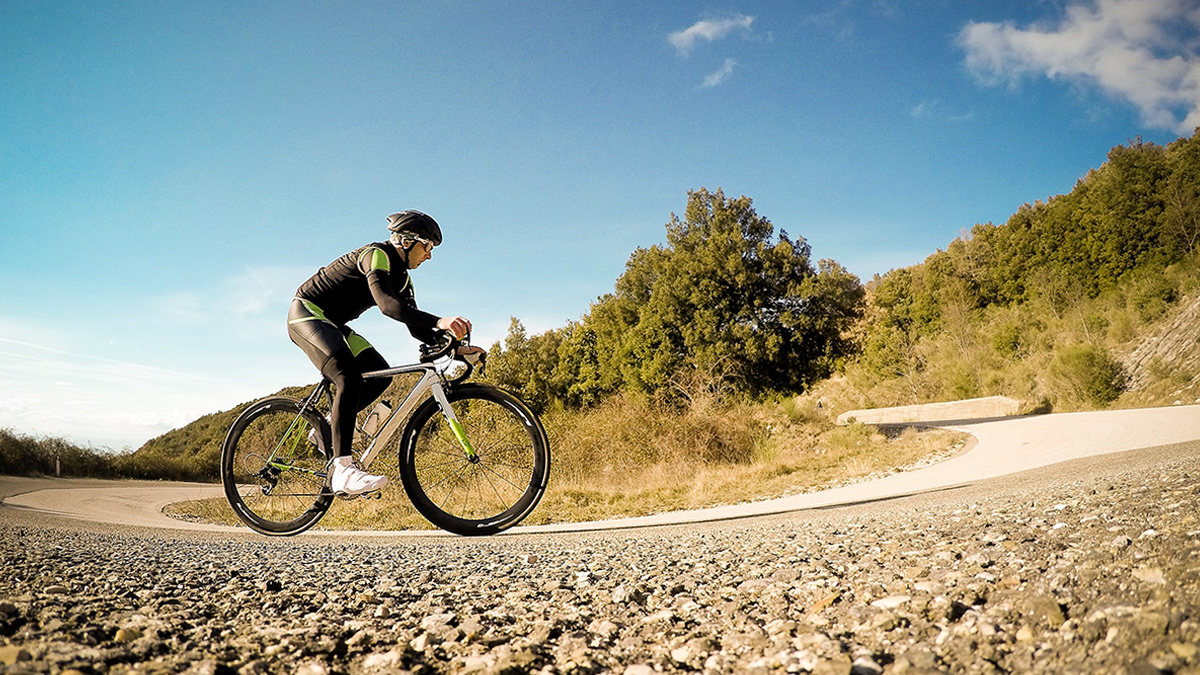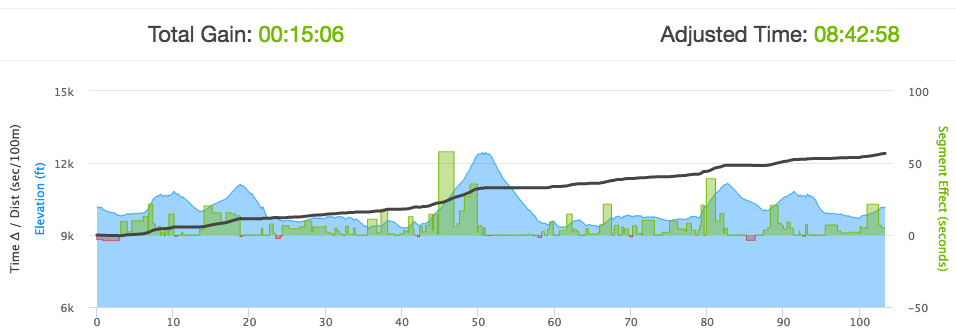
Striking the appropriate balance between your power output and weight is critical for a sustainable and healthy approach to training and racing. Many athletes try to maintain as low a weight as possible while still being powerful on the bike—but it can be difficult to hit that sweet spot. If weight loss is taken too far, athletes can see a decrease in overall power, along with more serious health issues. While watts per kilo are often top of mind, health and resiliency should ultimately be the key goals for any athlete. Here’s how to strike that elusive balance.
Why is Weight Important?
Weight plays an important role for all athletes to some degree, but in cycling specifically, watts per kilogram (W/Kg) or strength-to-weight ratio, has been found to be one of the single best predictors of performance. Simply put: the higher a cyclist’s W/Kg is, the more likely they are to excel. To illustrate this, consider that one pound of excess weight requires about two watts to pull up a hill. On a bike, three kilograms of fat equates to around three seconds per kilometer on a climb.
That means that if you have ten pounds to lose, you could be climbing 7-10% faster.
Tools such as BestBikeSplit can help illustrate the relationship between weight and power. In the example below, we can compare what a relatively small decrease of 5% in total body mass would do for a rider’s performance over the course of the Leadville Trail 100 bike race.
Between the two figures below, every factor besides weight is identical, including FTP, bike weight, weather, and rolling resistance. The first image shows the athlete’s baseline, while the second shows their adjusted time given a hypothetical weight loss. You can see that simply being 5% lighter made this athlete over 15 minutes faster, with the biggest time benefits (shown in green) occurring during Leadville’s notoriously challenging climbs.
How to Improve Strength-to-Weight
So we’ve identified that improving strength-to-weight ratio is important, but how do you optimize yours? There are three ways to improve W/Kg.
- Increase your power output while keeping your weight constant.
- Keep your power output constant while decreasing your weight.
- Increase your power output while also decreasing your weight.
Depending on an athlete’s goals, current level of fitness, and current weight, any of these three approaches could be the right one. They may also shift over time as fitness increases and weight loss goals are met.
Set Informed Power Goals
First calculate your W/Kg at different durations along the Power Duration Curve. The four standard durations are 5 second, 1-minute, 5-minute, and FTP (Functional Threshold Power). For the purposes of power profiling, these are the ranges that best reflect neuromuscular power, anaerobic capacity, maximal oxygen uptake (VO2 Max), and lactate threshold (LT) respectively. These four durations not only correspond to different systems in the body, but also let you work on event-specific efforts to make sure you’re building strength in the appropriate areas. Once you identify where there’s room for improvement you can then select the right approach for you to begin increasing W/Kg.
Revisit Your Training
Next it’s time to tackle strength to weight from both a training and diet perspective. Focused workouts with supplemental strength work will help replace fat with lean muscle, as well as increase your power along the power duration curve.
As you replace fat with lean muscle you’ll see gains from a strength perspective, as well as adaptations on a cellular level. While you train your weaknesses with sprints, intervals, hill repeats, and strength training you’re changing the way your body consumes oxygen and processes lactate.
Your body’s uptake of oxygen, often referred to as VO2 Max, will increase as you focus on building strength and aerobic capacity. This allows you to perform efforts outside of your lactate threshold (105%-110%) for longer durations. Increased efficiency in oxygen delivery helps your body to more quickly buffer lactic acid, letting you spend less time anaerobic when you begin your next sprint or big climb. While your focus on W/Kg will no doubt have you feeling stronger and looking leaner, you’ll also be building a healthier and more efficient body.
Dial in Your Diet
A healthy diet is important for any athlete interested in maximizing their performance and looking to reach their full potential. The “right” approach will be based on each individual’s needs and goals. However, there are a few guidelines to help increase the likelihood of achieving any weight loss goal.
IMPROVE THE QUALITY OF CALORIES COMING IN.
Focus less on the actual caloric value of the food, and more on the nutrient value. Quality foods tend to have fewer calories, but are more nutrient dense, which will help your body stay healthier and help you feel fuller.
FUEL FOR PERFORMANCE.
Unlike non-active individuals who attempt to lose weight, athletes have to balance calorie burn with calorie intake. Make sure to still get enough carbohydrates, fat and protein to fuel high-quality workouts.
EAT MORE OFTEN.
Taking in smaller, more frequent meals tends to help stabilize blood sugar and stave off overeating.
TRACK YOUR CALORIES.
The goal is not to capture every single calorie, but rather create an environment where you’re mindful of intake. This awareness typically helps limit overall consumption.
How to Achieve a Healthy Balance
Balance is key! Whether your sole focus is on increased power, or you’re trying to find a healthy weight while realizing your potential on the bike—there has to be balance.
From a weight-loss perspective, using body fat percentage is a good gauge. The minimum healthy body fat for men is 6% and for women is 14%. These percentages can and will change during the course of focused training, but for most athletes, dropping below these ranges can negatively affect health and performance. I prefer body fat as a measurement, rather Body Mass Index (BMI), which is easy to calculate, but is calibrated based on the general population rather than athletes.
Make sure to keep your training in check. Often athletes think the answer is to just “do more” in the pursuit of their goals, but volume isn’t necessarily the answer. Focus on quality over quantity and be sure to leave plenty of time for recovery. A focused approach where workouts are written and executed (based on weaknesses identified along the power duration curve) will yield much more precise results, rather than those that attempt to “just ride”.
Most athletes want to be stronger, faster, fitter, leaner, or lighter. While the pursuit of all of these things is fine, it must be done in such a way that performance and health are prioritized. Taking a sustainable approach to finding an ideal strength to weight ratio will yield long-term fitness and health benefits.
Focus on proper diet and mindful workouts to create an approach that’s individualized and structured. Improving strength to weight ratio can be one of the greatest performance gains for any athlete, but it must be done responsibly and with great care.


Comments
Post a Comment